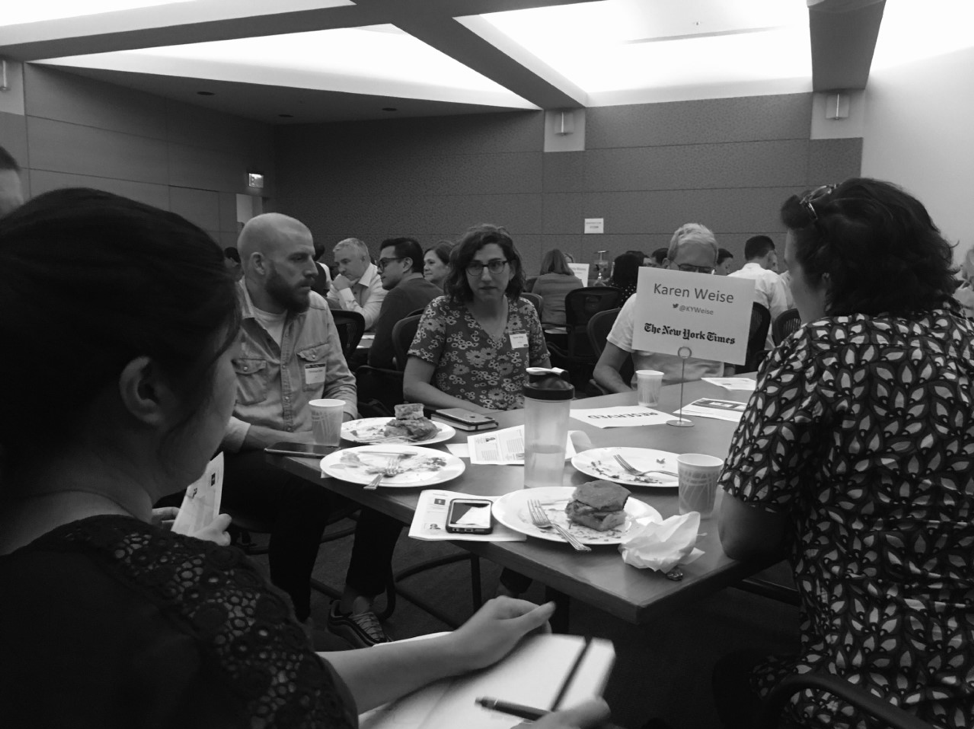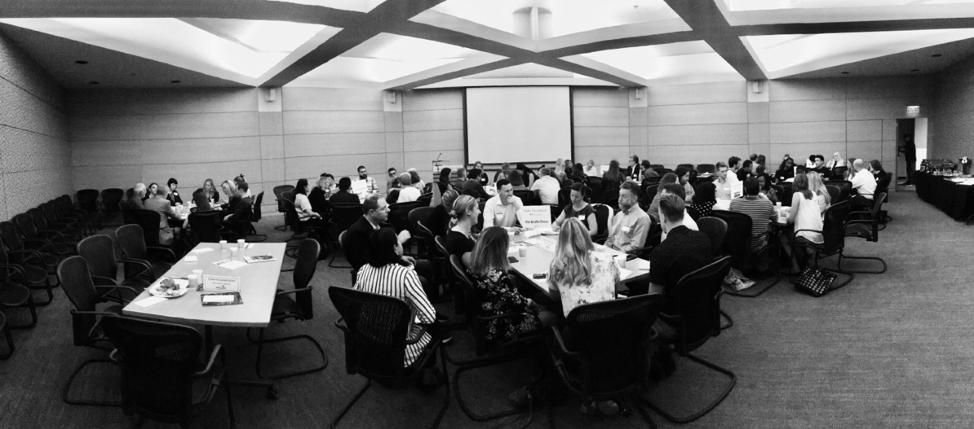Karen Weise, a Technology Correspondent for The New York Times based in Seattle, gets pitched a lot of technology stories … which isn’t exactly surprising. What is surprising is how little these pitches have to do with Microsoft or Amazon, the two companies she overwhelmingly writes about.

Weise’s subtle inference that a lot of people pitching reporters are not readers of those same reporters’ works was a common theme of Business Wire Seattle’s annual “Meet the Media Luncheon,” held in downtown Seattle in early September.
Weise was one of eight Seattle-area journalists who sat down with communications professionals and media aficionados for a speed dating-like event where attendees had the unique opportunity to engage in small group discussions with reporters and editors to better understand what kinds of pitches annoy journalists the most, the most effective way to communicate with certain journalists, and how journalists see their industry changing.
What quickly became apparent in almost all of the discussions was the lack of familiarity most communications professionals have with the journalists to whom they’re pitching stories.
“I’m never annoyed to get pitched,” said Weise. “But if you read my work you’ll have a good idea of what I’m writing about and you really should pitch accordingly.”
Ashley Stewart, formerly with the Puget Sound Business Journal and a soon-to-be Business Insider reporter, shared Weise’s sentiment. “A lot of media are chasing the same stories but care about them for very different reasons,” said Stewart. “That’s why it’s so important to research and read [and] watch local media. If you’re smart about it, you may be able to pitch your same story in different ways to a variety of media.”

Joining Stewart and Weise at the event were Patranya Bhoolsuwan, Anchor and Reporter at KIRO 7; Rami Grunbaum, Business Editor of the The Seattle Times; Taylor Soper, Managing Editor of GeekWire; Andrea Larson, Editorial Manager at DOPE Magazine; Tammy Mutasa, Reporter at KOMO News; and Rob Smith, Editor-in-Chief at Seattle Business Magazine.
While most speakers touched on the importance of knowing who you are pitching, they also offered a wide variety of tips when it comes to working with the media:
- All the journalists preferred to receive pitches via email – well-crafted pitches, nothing robotic. “Start with the five Ws,” said Bhoolsuwan, “and stay concise. And please be professional in your communication. I don’t want anything too informal or cheesy.”
- Mutasa, a fellow television reporter, said that TV people love lots of detail up front in an email pitch. They also like it when the pitch spells out the access they will have. She cited Amazon and hospitals as among the best at this. She also advised sending pitches to producers if you know them as it may give you a better chance of getting your story on air (producers get less email and, ultimately, it’s their show).
- Soper said GeekWire wants to give their readers stories they can’t get anywhere else and that he is always looking for pitches that are unique, like scoops, exclusives, positive stories, and feel-good stories.
- Virtually every journalist is looking for an exclusive story. If you give them that, it will go a long way in your future dealings with them.
- Stewart said she knows when you haven’t researched her. At the very least, she advised, check out the LinkedIn profile of the person you are pitching and how long they’ve been with their current company.
- Both Smith and Bhoolsuwan made a point about tying your story to the news cycle: it helps tremendously if you know what is going on in your local market and how your announcement relates to current news.
- Grunbaum said The Seattle Times now thinks of itself as both a newspaper and a website after so many years of just the former. He said it was important to consider what entity might be more appropriate for your story when you pitch. Breaking news is better suited for the web, while other news that is not as timely may be better for print.
- According to Bhoolsuwan and Mutasa, there is nothing more frustrating than no one being available when they do see a story pitch they like. Too often they respond to pitches and don’t hear back. Remember, TV news is very fast; they advise you to be camera ready in 30 minutes if they come calling.
- Stewart said a good way into Business Journals is being available for the Q&A with Business Leaders section of the publication, as they are always looking for people to interview.
- Nearly all the journalists asked that you make it as easy as possible to get the elements of a story (photos, videos, quotes, bios, etc.). As the number of journalists dwindle, they are more pressed for time than ever before, so anything that makes telling the story easier is welcome.
With regard to that last tip, we highly recommend using Business Wire Interactive Media to get your story and multimedia into the hands of journalists. They’ll appreciate it!






